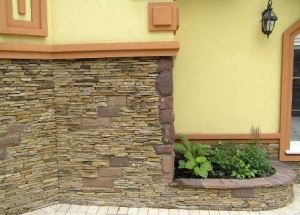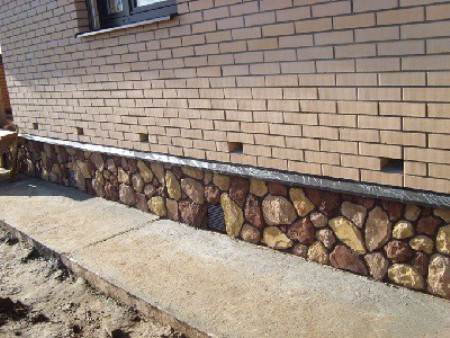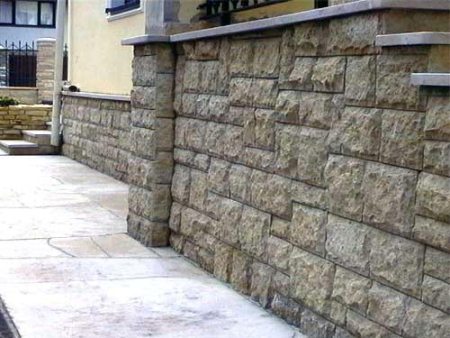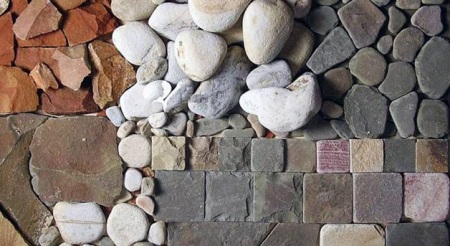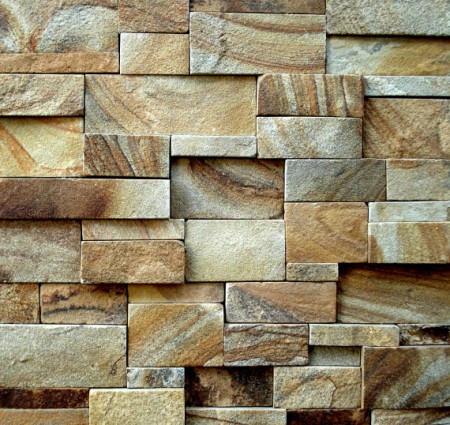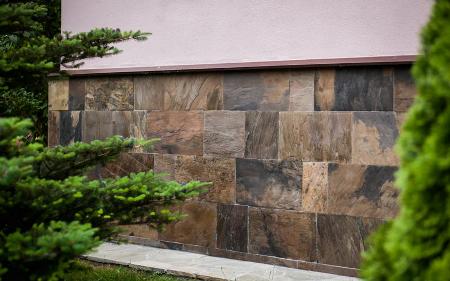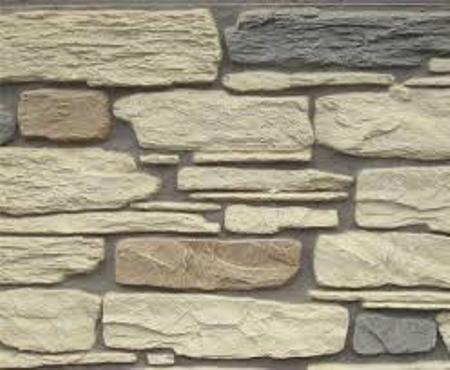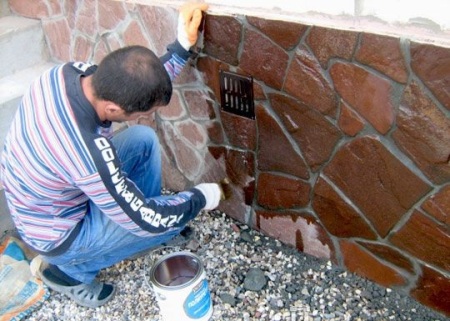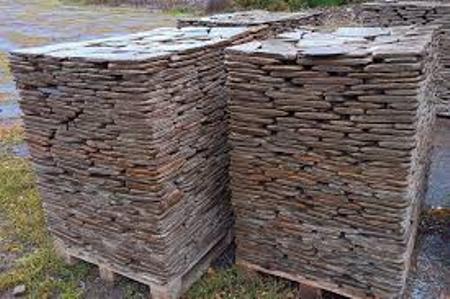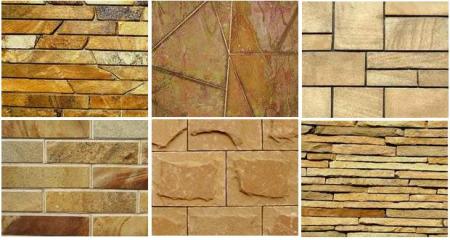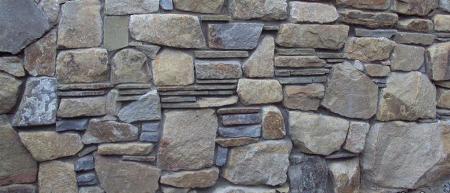The desire of a man to return to a natural habitat to some extent forced modern designers to turn to building materials of natural origin, those that were used by our ancestors for many centuries. The natural stone is not an exception, which is very often used today for facing the socle. Of course, this material can not be attributed to a low price category, but if you take into account that the socle is only a fifth of the facade, and its attractive finish will make the whole house look more respectable, it turns out that such a finish of the socle is the most optimal variant.
Content
What is the plinth and why does it need finishing
First, it is worthwhile to understand why the issue of finishing the socle deserves special attention. It is part of the foundation or facade of the building, which is located above the ground level. The importance of this part of the building is difficult to overestimate, it is just like the foundation is the basis of the construction of the house. You can distinguish the base in any structure, even if its lining is made of the same material as the facade. Specialists-builders believe that the socle is the part of the house that needs decoration most of all. And the point here is not at all in making it particularly attractive, the main task is the maximum preservation of integrity and protection from the effects of natural factors, especially rain, snow, temperature differences. However, when choosing the material for decoration of the socle, one should take into account its decorativeness, the ability to beautifully combine with the facade cladding, to maintain the overall architectural style of the building.
Types of plinth and materials for its finishing
The plinth can have different heights and location relative to the walls, it is protruding, relative to the wall line or sinking. Although it is more often possible to see the protruding base, the sinking one has a chance to last much longer - in consequence of its greater security.
The optimum height of the socle is 0.4-0.5 m, and at a lower level it will be difficult to cope with the arrangement of the waterproofing layer. The most destructive effect on the plinth of moisture, temperature changes, rapid change in the thawing and freezing cycles. Usually the material for making socle is:
- bricks,
- concrete reinforced with reinforcement,
- a natural stone.
It is the last of the materials that is most attractive and resistant to weather changes, it is not necessary to finish it. But the surface of concrete and brick in the finish need. When choosing facing materials, one should take into account their inherent protective qualities and the ability to take on a portion of the load that the construction of the building and nearby ground masses have. Those. When choosing, one should seek the optimal ratio between external attractiveness and performance characteristics:
- wear resistance,
- high heat savings,
- low hygroscopicity.
To a large extent these requirements are met by natural stone.
Natural stone for plinth and its types
A natural facing stone is used in the processed or untreated form. Fragments of untreated material can have different sizes and shapes:
- cobblestone,
- pebbles,
- layers.
The use of untreated stone allows you to create unique in terms of beauty and design of textured surfaces.
The second type - processed stone - is most often a tile, obtained by cutting stone blocks. The processed material can be:
- the hawser or noodles obtained as a result of the stone breaking along the flat edge, the sawing is one side, the other three have a natural appearance;
- tiles that have or do not have a zigzag around the perimeter, which has a different length, but a fixed height;
- a tumbled stone, which, when machined on a tumbling machine, sharp edges were smoothed, sawed and not sawed materials could be treated;
- strip, having a width of the order of 35 - 50 mm, obtained when cutting flat stones.
For processing, different rock types can be used, the installation of processed stones is much simplified. Usually, the plinth trim is made from:
- marble, sandstone, granite,
- shungite, limestone, dolomite,
- siltstone, slate, gold leaf,
- lemezite, quartzite sandstone, wild stone.
Sometimes other breeds are used.
Facing the socle with stone - the advantages of natural material
Among the main advantages of finishing from natural stone is its long service life, which is much higher than that of any other finishing material. Care for this finish is not required. Positive moments will be:
- environmental friendliness,
- frost resistance,
- low thermal conductivity,
- ability to retain moisture.
post-assembly processing
To make the natural material even more durable, it is subjected to heat treatment, upon completion of the installation work, the stone is recommended to be treated with a special solution or varnished. Such measures help to prevent natural changes that can be observed on the surface of the stone, namely:
- growth of mosses and mold,
- manifested are high.
Processing is done once, repetition is not required. At least until the washing of the basement or repair of the entire facade is carried out. Designers respect natural stone for its ability to combine with any materials that are used to decorate walls and arrange the surrounding area.
price factor
As for the high cost of the facing stone, it should be noted that this statement is valid with respect to marble, granite, some rare types of stones, if it is desirable to invest in a more modest amount - you can stop the choice on rubble stone, sandstone, limestone, limestone. The color range of these stones is diverse, they are also capable of improving the appearance of the socle and decorating the facade.
Facing the socle with a stone - the order of the work
choose the material correctly
When deciding to perform the facing of the cap with your own hands, you will need to make several important decisions: determine the color of the material and its thickness. For example, when sandstone cladding is used to use the so-called. plastushku - pieces of which have the same thickness, but differ in shape and area. A bit more difficult will be the issue with the choice of shade - it should be in harmony with the color scheme of the whole building, for example: the sandstone of the reddish shade will perfectly match with the brown roof. Here it should be borne in mind that usually the cost of a material depends on its color.
The most common, gray, has a lower price, rare samples with a greenish, blue or red shade will cost a more substantial amount. The cost of the facing material will also be affected by its thickness - the thinner the stone, the less expensive it is. With increasing thickness of plates, the cost of square meters. m will increase. It will also be necessary to calculate the amount, to do it easily, it will be enough to calculate the area of the socle and add to it another 10% - they will go to fit and trim the plates.
To fix stone fragments, you can use a quality solution made from river sand and cement, or a special adhesive designed for mounting heavy tiles, suitable for outdoor work. After purchasing all the necessary materials, you can start facing works.
step-by-step execution of work
- First of all, we prepare the surface of the socle - we remove the inflow of the solution, if any, on the brick plinth or all protruding defects on the concrete base.
- Further on the surface we put a concrete contact - priming solution on a polymer base, which can provide more reliable adhesion of the finishing material and the substrate. Apply the solution with a roller or brush, the latter is rational to apply if the surface has a small area.
- Then select fragments of stone that have a smooth end face, apply to the side that will be fixed on the wall, a layer of mortar or glue. Each fragment should be pressed against the wall with effort, while choosing a position that allows it to be positioned as close as possible to the neighboring, already glued fragment.
- Fixing the stone should be tapping on it, achieving complete removal of air.
- The resulting gaps between the adjacent stones should be filled with fragments of suitable size and shape. If something suitable can not be found - you can detach the excess parts from the most suitable plate.
- It is desirable to monitor that the stitches obtained during the laying of the stones are uniform.
- Glue the pieces of material in such a way that their surface forms a single plane.
- Repeating the selection-gluing procedure, we collect, as a mosaic, the whole surface of the cap. To get a beautiful horizontal line in the upper part, you can use the Bulgarian, which is recommended to install a cutting circle on the concrete - cutting off all unnecessary you can get straight end faces, which actually allow to create a horizontal line of the top.
- If there are small free spaces between neighboring stones, they can be filled with small fragments obtained when trimming plates. If desired, as a filler of the space between the large fragments, you can use polished sea pebbles-pebbles.
- Stripping and filling of joints should be made before the concrete solidifies. If there is not enough solution and glue - it is added to the interfacial space, if they are applied in excess - they need to be removed.
- Similar work continues until the entire surface of the cap is completely covered.
Some useful tips for a more reliable fixing of the stone from specialists on video:
The main enemy of stone finishing is water penetrating into the seams, especially unpleasantly this process may end in the winter - when freezing the liquid will expand and cause the detachment of the facing layer. To eliminate this problem, you can cover the finished surface with a layer of varnish. You can also arrange a visor over the socle - in this case, it will not get precipitation even with side rain.
Finishing the base of the stone with your own hands is quite possible, but the work will require maximum care and careful execution. Its result will please the eyes, and also serve as a reliable protection to the base of your house.


